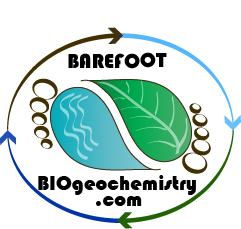In addition to the jumping ants, leeches, snakes, mud and mosquitoes we saw a wide range in climatic conditions, from strong winds with temperatures in the high 20’s, to a heat wave in the high 30’s followed by cool drizzle in the low 20’s, all making sampling around the lake challenging.
Extensive lily coverage of the site.
The study implemented a variety of sampling techniques aimed to account for the three main methane pathways to the atmosphere. Methane diffusion rates and plant mediated flux rates were measured during multiple transects, using a floating chamber coupled with a Los Gatos gas analyser. Ebullition rates and concentrations were measured using replicate methane cones and run through a Piccaro methane isotope analyser (cavity ring-down spectroscopy). In addition spatial and temporal representations of water column methane concentrations were measured during a 96h time series using a second Piccaro (CRDS) measuring methane, carbon dioxide and their isotopes, along with multiple spatial transect grab samples, from different regions of the lake and vegetation types.
Dr Damien Maher overlooking the chamber incubation flux rates within the Melaleuca forest
In an effort to quantify lily coverage we sought the assistance of some drone mapping from Brendan Kelaher at the National Marine Science Centre, to accurately quantify the % of vegetative coverage within the lake. Future research sites were also scouted and prepared for seasonal vegetative methane flux measurements, from a within a variety of habitats and intermittently wet- dry floodplain areas.
Ebullition cone deployment ready for their maiden voyage
The results from this preliminary research will be processed over the next 6 months aiming for publication in late 2017.”
Late arvo sampling of the sediment-air methane flux using LGR gas analyser
Assessing chamber incubation data in situ, showing the flux rates of methane and CO2 from the vegetated lily areas of the lake
Assessing the native wildlife
Sampling night-time chamber incubations vs day-time to account for diurnal variations
Dr Douglas Tait deploying ebullition traps
One wet Luke Jeffrey and his study site after 24h working in the continuous drizzle
Melaluca forest fringing the western side of the wetland
Drawing out methane bubbles from a 24h period to calculate volume and concentrations for ebullition
Dr Brendan Kelaher deploying the NMSC drone for aerial mapping of the vegetation coverage
Dr Damien Maher giving a pep talk to the local Green Army volunteers about the role of wetlands and carbon cycling
Novel techniques (wack a tube straight over the plant aerenchyma!) to measure the plant mediated methane flux
Native frog
Future study sites resembling picnic areas, ready to quantify seasonal vegetative methane emissions
Dr Douglas Tait GPS mapping the future wetland research sites to be revisited in 2017


















